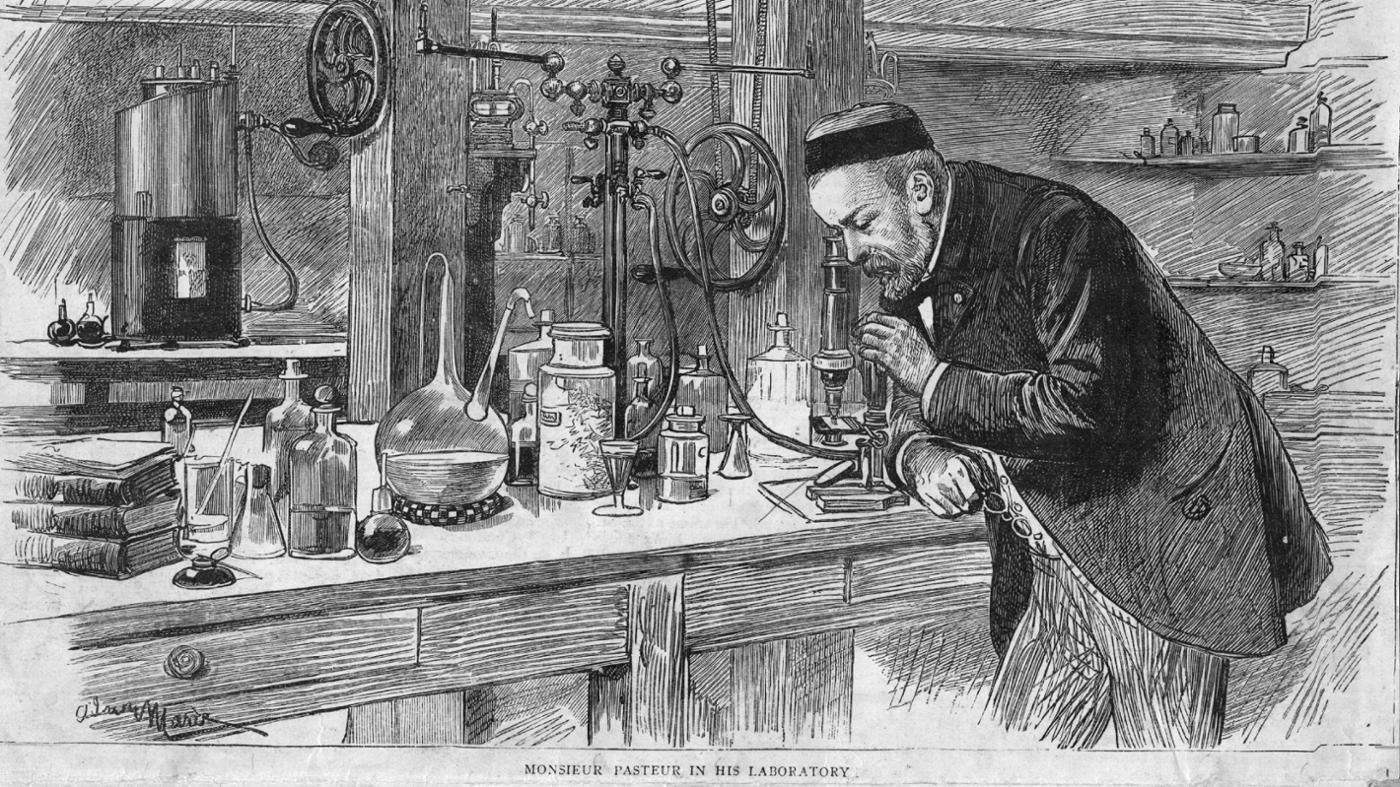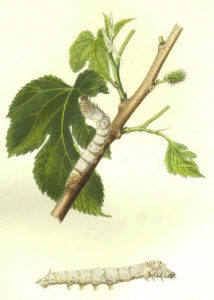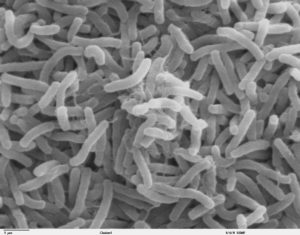Originally published in “The Dial, Volume VI” in 1886

Silk Worm Disease
In the year 1865, the diseases which for several years had threatened the extinction of the silk-worm in the south of France, had prevailed to such a degree that the Minister of Agriculture appealed to the famous scientist, Dumas, for advice regarding the means of opposing a plague which entailed upon the country an annual loss of not less than twenty millions of dollars. It so happened, just then, that the superintendent of the scientific department in the Normal High School at Paris had recently distinguished himself by an investigation of the processes of fermentation concerned in the manufacture of beer, wine, and vinegar. Born in 1822, carefully educated, and trained from early life in the rigid school of experimental chemistry, Louis Pasteur had exhibited unrivalled industry and powers of observation, which had rapidly raised him to the highest rank in his special department of science. Latterly he had been occupied largely with the study of the microscopical growths which effect fermentation and putrefaction in decomposing matter. He had thus been enabled to discover the cause of the failures that often attend the manufacture of wine and beer, and had pointed out the remedy against such disaster. To the mind of M. Dumas, the thought at once presented itself, that M. Pasteur was the man best qualified to investigate the silkworm disease. But Pasteur was at first unwilling to undertake the inquiry.
“It was at the time when, as an application of his latest studies, he had just recognized the true theory of the fabrication of vinegar, and had discovered the cause of the diseases of wines; it was, in short, at the moment when, after having thrown light upon the question of spontaneous generation, the infinitely little appeared infinitely great. He saw living ferments present every where * * as direct authors of contagious maladies. And now it was proposed to him to quit this path, where his footing was sure, which offered him an unlimited horizon in all directions, to enter on an unknown road, perhaps without an outlet. Might he not expose himself to the loss of months, perhaps of years, in barren effort?”
M. Dumas insisted. * * * “But consider,” said Pasteur, “that I have never handled a silkworm.”
“So much the better,” replied M. Dumas. “If you know nothing about the subject you will have no other ideas than those which come to you from your own observations.”
Louis Pasteur Saves the Silk Industry

The fame attendant upon this astonishing success soon rendered the name of Pasteur a household word among scientific men throughout the world. The pathway thus marked out seemed to open an extensive vista before the eyes of students in other departments of science. Physiological research and the investigation of infective diseases were greatly stimulated by this demonstration of the truth of theories which had floated vaguely in the imaginations of pioneers in the sciences connected with medicine. In England and in Germany were at once commenced those researches which culminated in the brilliant results of antiseptic surgery. In France the turmoil of the great Franco-German Avar retarded the wheels of progress. Pasteur returned quietly to the study of the fermentation of beer, watching from afar the researches of those who were following in his footsteps. Others were attempting the work in which he had long desired to engage—the study of the causes of infective diseases. But his modesty drew him back from the task. “I am neither doctor nor surgeon,” he was accustomed to say, when urged to enter this field of research. At last, however, the opportunity came; and he threw himself with all the zeal of youth, tempered and guided by the vast experience of age, into the current of investigation. The subject to which he first addressed his attention was the cause of splenic fever, a disease exceedingly prevalent among horned animals in France and in many other countries. Several observers, notably Dr. Davaine, had remarked the presence of a microscopical parasite in tin* blood of animals dying of this disease, but the exact nature of its relation to the symptoms presented by the disease had not been fully explained. Pasteur soon showed that not only is splenic fever the consequence of infection with the parasite, but that a closely associated disease, called septicemia, is also excited by inoculation with another minute parasitic organism that is contained in putrefying animal matter. To a confusion of the symptoms of septicaemia with the symptoms of splenic; fever was attributable the uncertainty regarding the nature of the disorder which had previously obtained among observers.
Pasteur and the Chicken Cholera

Having thus unraveled the difficulties by which this problem had been surrounded, Pasteur addressed himself to another disease which has been exceedingly prevalent in France—chicken cholera. Its parasitic nature having been fully demonstrated, he now proceeded to the application of a principle suggested by the results of vaccination against small-pox; and, in the year 1880, he announced the most remarkable of all his discoveries—the attenuation of contagion. Reflecting upon the fact that the virus of small-pox, though transmitted again and again from one human being to another, will always reproduce smallpox, while the same virus passed by inoculation through the body of a cow will infect the animal with cow-pox—a much less virulent disease, which when transmitted again to the human subject reproduces, not small-pox, but the vaccine disease, a malady resembling, but far less virulent and dangerous than the original small-pox,—reflecting upon this singular and unexplained fact, Pasteur was led, by the results of his experiments in the culture of the virus of chicken cholera, to suspect that it might be possible, by varying the conditions of propagation, to mitigate the intensity of any given species of contagious matter. He was. thus led to a series of experiments, which finally enabled him to produce a weakened form of the chicken-cholera poison. Fowls inoculated with this “attenuated virus” were made very ill, but they speedily recovered, and were no longer susceptible to injurious effects from subsequent inoculations with even the most energetic form of the deadly virus. A new form of “vaccination” had thus been discovered. Encouraged by this success, Pasteur now addressed himself to the production of an attenuated virus for splenic fever. To recount the difficulties surmounted in this attempt would occupy too much space. It must be sufficient to say that, after months of anxious experiment, success was the reward of his efforts; and it is now possible, by vaccination with a modified virus, to protect the flocks and herds from a deadly plague which has long been justly dreaded by the farmers of Europe.
These wonderful discoveries could not fail to arrest the attention and to excite the imagination of everyone. With characteristic liberality, the French Government has provided a magnificent laboratory, in which Pasteur guides the experiments of die younger assistants by whom he is surrounded. The causes of all contagious diseases are there being subjected to investigation with a view to the discovery of the best means of opposing their ravages. The most recent success in this direction consists in the discovery of an attenuation of the virus of hydrophobia, by the use of which animals may be protected against that most fatal and terrible of diseases. No wonder, then, that visions of an extension of these methods to other diseases rise before the imagination, and we may dream of the day when scarlatina and yellow fever and cholera and typhus fever and the plague shall be dreaded no more than an invasion of small-pox, which we now so easily control by vaccination. In the words of one of the most distinguished scientists in France, we may without exaggeration say: “This is but the beginning. A new doctrine opens itself in medicine, and this doctrine appears to me powerful and luminous. A great future is preparing; I wait for it with the confidence of a believer and with the zeal of an enthusiast.”
HENKT M. LYMAN.
 Pasteur Brewing Louis Pasteur – Science, Health, and Brewing
Pasteur Brewing Louis Pasteur – Science, Health, and Brewing